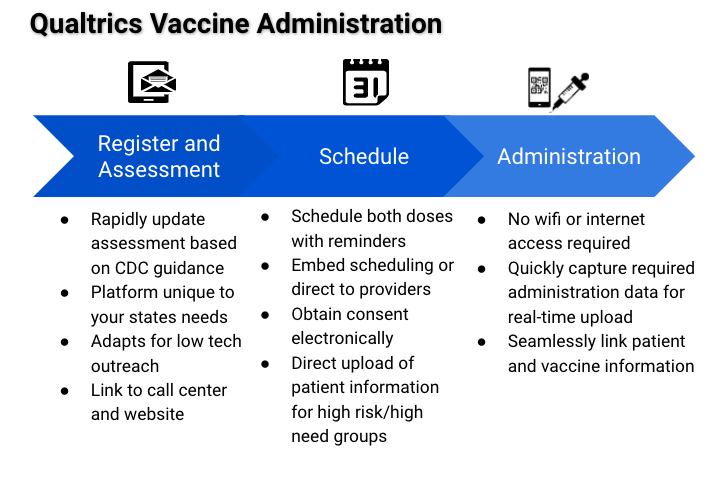Featured
Vaccine distribution doesn’t have to be this hard
State and local governments have struggled to manage vaccine distribution. We can do better – because we already have the tools to make this experience seamless. Here's how...
After all the excitement and planning to get the vaccines approved, we are now confronted by daily headlines on the challenges of distribution. One of the most significant pain points has been aligning demand with a clear and seamless assessment and scheduling process. Issues that have arisen include:
- Uncertainty as to who is eligible
- Unclear procedures for individuals to request a vaccine
- Websites crashing as people try to schedule their vaccination
- Older Americans waiting out in the cold overnight in hopes of getting a vaccine with no prescheduled appointment.
What does it take to make vaccination work well?
An integrated system for communication, scheduling, vaccine management, and follow-up are critical for speedy, consistent, and effective vaccination of the population. And this system already exists with platforms like Qualtrics’ XMOS, which manages the entire workflow while continuously monitoring residents’ and employees’ experiences in order to continuously improve the process in real-time with no disruption.
The initial step – registration, prioritization, consent, and scheduling – must be wrapped in the right communication and messaging. Residents want to be heard and acknowledged, informed and instructed as they move through this urgent process.

Front-end experience matters
People’s attitude toward the vaccine shifts from hesitancy to demand when they trust the product and the organizations distributing it. People trust when they experience these service elements:
- clear communication that directly addresses people’s diverse concerns
- transparent prioritization that is based on evidence and equity
- well-designed transactions that exceed people’s expectations
- consistent follow-up that enables people to provide feedback and see things improve as a result.
People lose trust when any part of these service elements fails to meet or exceed their needs and expectations. And this isn’t just about the public’s satisfaction. Public health outcomes are only achievable when people participate.
For COVID, herd immunity will only happen after most people in this country have obtained both vaccine doses. A bad experience during the first interaction puts this goal in jeopardy, as people may opt out of one or both doses.
A good process creates better experiences, achieves public health outcomes, and generates trust. Here is what it looks like to get it right:
- Transparent and targeted communications: all four of the top-performing states have specific and ongoing information processes in place.
- Accessible workflow: this should leverage technology and exceed people’s expectations.
- Consistent tracking, follow-up, and continuous improvement:
- Appropriate reminders, feedback can help ensure that residents return for their 2nd dose
- Create a great user experience at scale
- Drive continuous improvement based on the feedback
These stories show you the lift is not heavy – and we can help. Get in touch.
See our Vaccine Management + Citizen Experience solution in action
